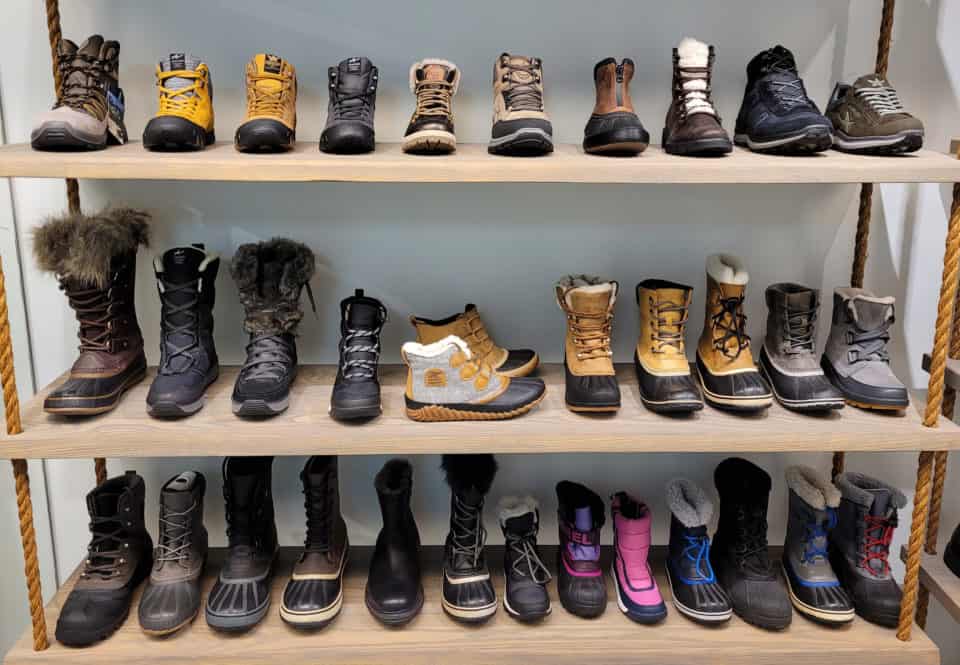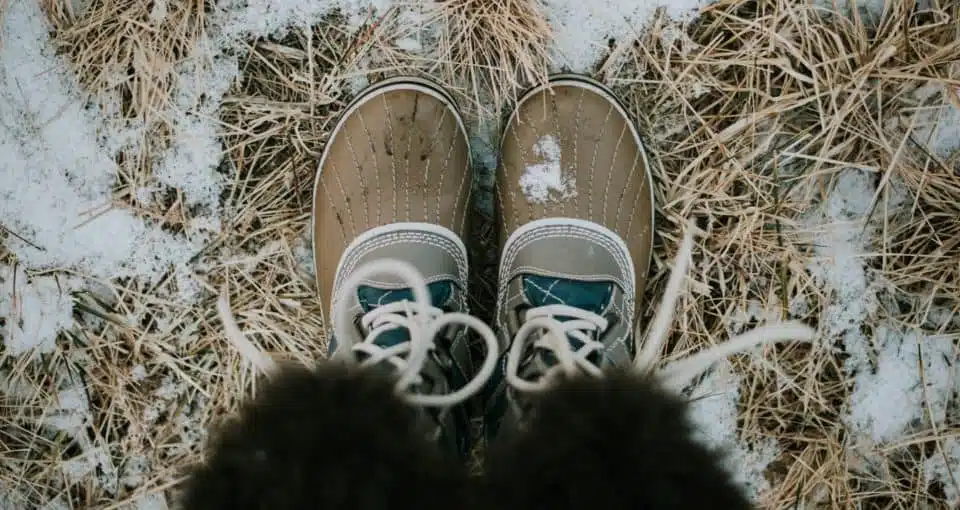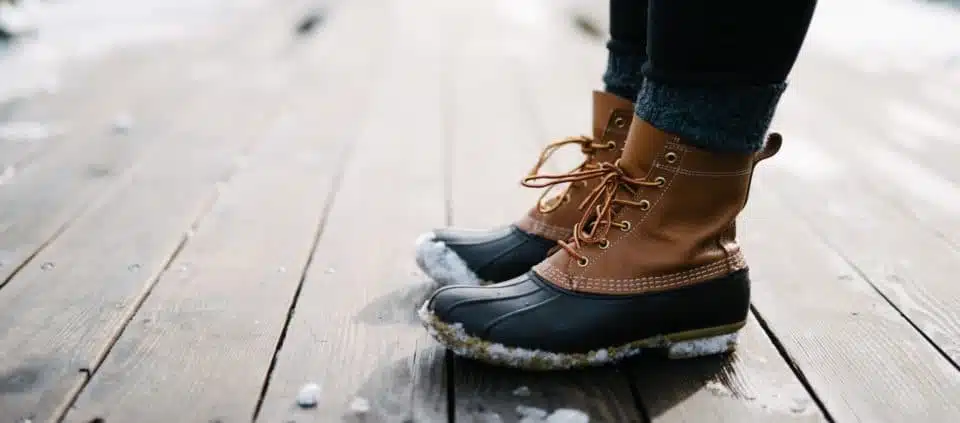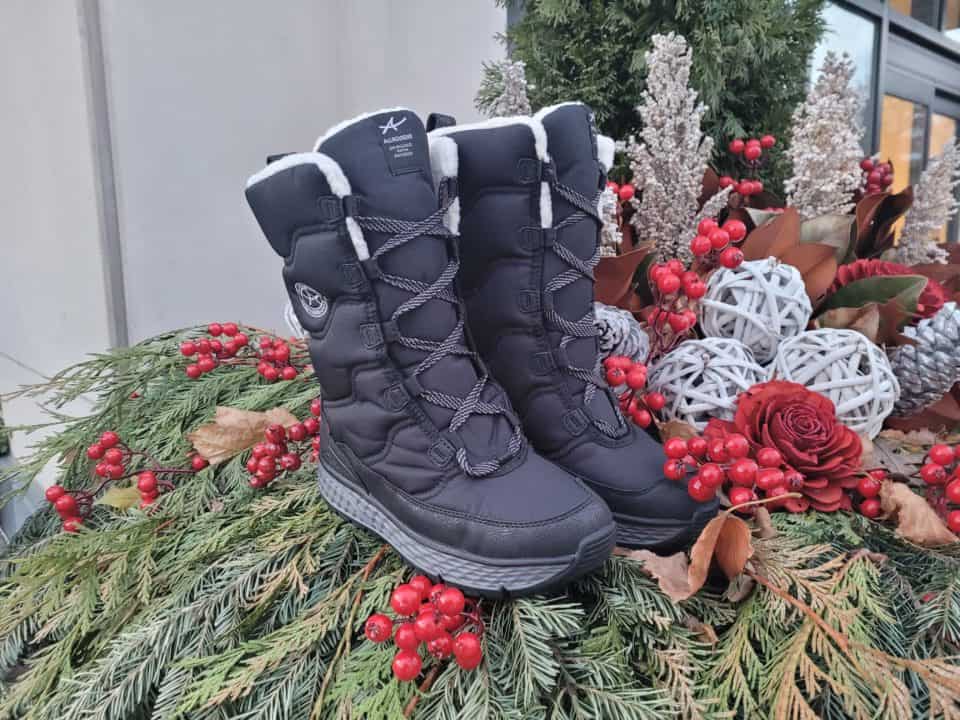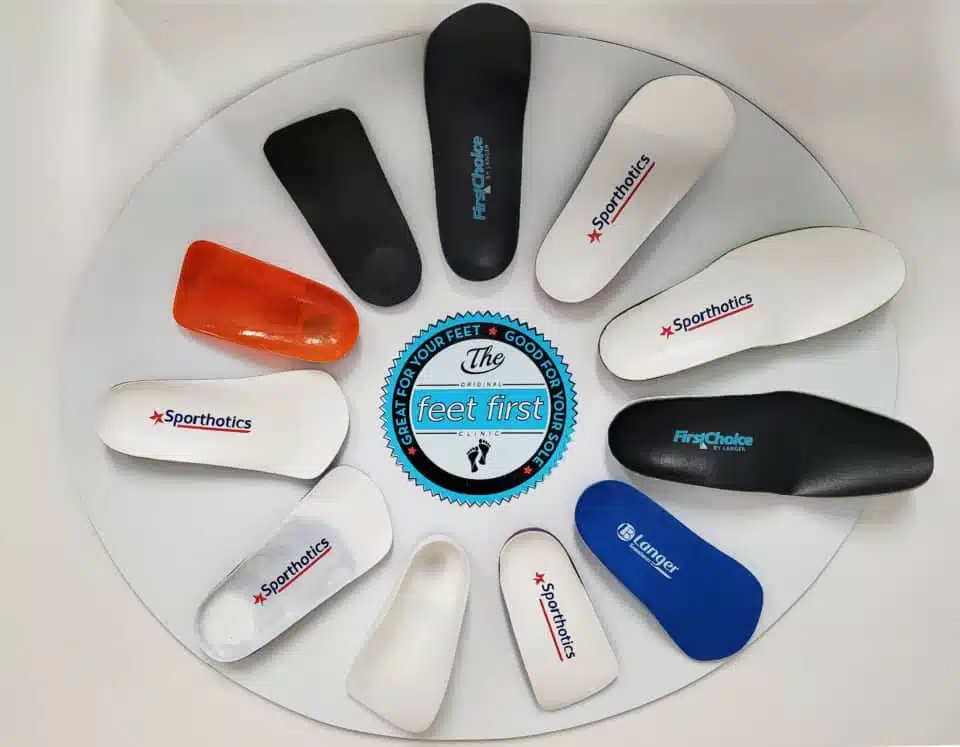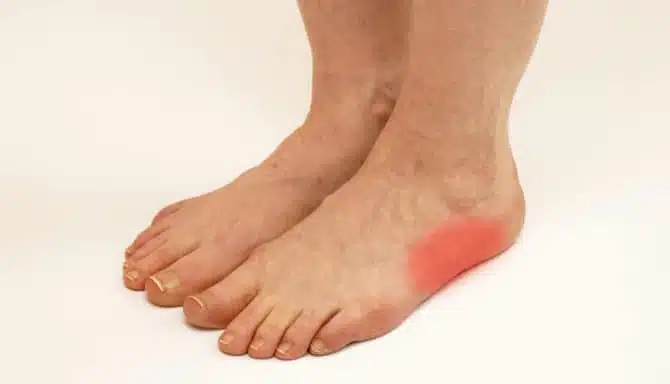Winter is around the corner, whether we like it or not.
Winter in Canada is the coldest season and stands out for a few reasons. It’s colder, it’s windier, there’s snow, frost, and it’s dark for most of the morning and evening. Due to conditions, footwear is absolutely critical between the months of December to March. Unlike other seasons, where all-season footwear might suffice, it’s important to invest in winter-specific footwear. Not only for comfort, but for safety as well.
Fortunately, these days, the look of winter boots can keep up with the technical features, but you should never sacrifice comfort for style. Doing so will hurt your feet and could cause injury.
In this post, you’ll learn more about the components of winter/snow boots and footwear, and key features to keep in mind when shopping for winter. Consider this your key features guide for 2022 winter footwear.
Insulation
The first consideration is warmth. Keeping your feet warm in winter means you can help prevent weather-related foot conditions including frostbite and frostnip.
Winter boots are warm because of their insulation. A boot’s liner and layers accomplish this. The thicker (or heavier) the liner and more layers it has, the warmer the boot. There are two types of liners: removable, or built-in liners. Pac boots (traditionally a moccasin-type soft shoe worn inside an outer shoe or boot) are effective because the soft shoe is both removable and extremely warm. They double as a sock and can be swapped in for either warmer or cooler insulate layers. You may see this in brands like Sorel.
Thinsulate boots (a brand of synthetic fibre thermal insulation) more often have a permanent layer of lining within the boot. You’ll likely see this type of liner in a boot without a removable liner, like hiking boots and Sorel’s Tivoli line. This synthetic fibre is designed to like down.
Additionally, you might also find boots lined with PrimaLoft. The North face, for example, uses this synthetic material to line its boots. PrimaLoft was created as a waterproof version of down, as down feathers become ineffective when wet.
Beyond insulation types, some winter boots also have temperature ratings (just like jackets or sleeping bags). Many stores and websites provide this guideline as a reference point. Examples may include:
- 5°C to -5°C
- -5°C to -15°C
- -15°C to -20°C
- -20°C to -30°C
- -30°C and below
Those in Vancouver for example may have different insulation needs than those in Toronto. Further to that point, residents of the territories would need significantly warmer boots than those in Toronto. Use temperature ratings as a guideline, and go up an additional level if you’re unsure, just to be safe. It’s better to have overly warm boots than overly cold boots.
One way to influence boot warmth is to use an insole made of wool or sheepskin, which can add warmth to your boots.
Waterproof
Wet feet are never happy feet. With snow, ice, sleet, and puddles, the winter season is prime time for wet and soggy feet. If you wear footwear inadequate for the conditions, your boots may become waterlogged and even freeze, putting your feet at risk to the elements. Fortunately, most winter footwear is waterproof.
Look for brands that are either made with GORE-TEX or waterproof leather. GORE-TEX is a waterproof, breathable fabric membrane made of Teflon, and repels water while allowing water vapor to pass through. You can also make non-waterproof boots water-resistant by applying a PU coating. PU coating is polyurethane applied to the surface of a fabric which makes it waterproof.
By keeping your feet dry in the winter, in addition to being more comfortable, you’ll help prevent blisters, calluses, athlete’s foot, foot odour, and corns.
Sizing
Winter footwear sizing can differ from your regular shoe size. This is due to a few factors, including the liner compressing over time, the need to accommodate for thicker socks, and different sizing and cuts across brands.
Here are a few tips to ensure you choose the best winter footwear when it comes to size:
- Get fitted in-store. Here at Feet First Clinic, you can drop in for a shoe fitting by our knowledgeable staff. If you have any particular foot concerns or a foot condition, you can also see one of our licensed chiropodists by appointment for a foot assessment.
- Try boots on towards the end of the day. Feet swell throughout the day, and trying on footwear towards the end of the day ensures boots can accommodate the size fluctuations. The fact that our feet change size over time, and throughout the day is totally normal.
- Size up, never down. Especially with winter footwear, it’s safe to size up slightly to prevent pinching or bunching of your toes at the tips of your feet. Plus, additional toe room takes into consideration the fact that you may wear bulkier socks depending on the weather.
- Try on winter footwear with socks you own. When you go shoe shopping, we highly recommend trying shoes on with the socks you intend to wear them with. You can even bring an extra pair of socks to see how your shoes will work with different sock thicknesses. This replicates real-world scenarios so there are no surprises when you slip on your boots for the first – or 100th – time.
- Adjust for custom foot orthotics: If you wear custom foot orthotics, bring them when you try on winter boots. We recommend focusing on boots with a removable footbed, which will better accommodate your orthotics.
Breathability
Most boots are made with a combination of materials. As mentioned above, boots may combine specific outer layer materials and inner materials (i.e.: liners). Each boot comes with a specific use case so let’s clear up any confusion around footwear breathability. This can be thought of as the effectiveness of a boot to wick moisture away from your feet.
- GORE-TEX: Waterproof and Breathable
- Nylon: Generally breathable, but not as waterproof (depending on how it’s engineering). Nylon is also more likely to retain odour.
- Full grain leather boots: Breathable, but not always waterproof (it depends on how it’s coated)
- Rubber: Not breathable, but waterproof, durable and provides traction
As you may have gathered from the above, the ability of a material to wick away moisture ultimately comes down to how it’s engineered and coated. For instance, Sorel uses technology in their full-grain leather uppers that make them highly waterproof. Also, the outsole of a boot – particularly those super durable rubber outsoles that help provide grip in slippery conditions – can sometimes affect a boot’s breathability.
Whatever material you go with, it’s important to ensure that its waterproofing and insulating materials are not at the expense of breathability; they are indeed compatible with each other.
Traction
How do you prevent falls in snow and slippery conditions? Your boots’ traction is critical for grip in adverse conditions.
Winter boots come with varying layers and depths of tread on the underfoot. Think of this feature as equivalent to winter tires. Using this analogy, winter tires are designed specifically for use on snow and ice. They have a tread design with larger gaps than conventional tires. Winter boots serve the same purpose. Just as winter tires keep your car on the road, winter boots and their lugs help you maintain grip in slick conditions.
Most winter boots have outsoles that are either rubber, thermoplastic rubber (TPR) or thermoplastic polyurethane (TPU). All these materials are designed to be durable and provide traction. They also have shock absorbing properties.
It’s important to keep in mind that winter boots are not slip-proof on ice – especially on an incline. If you anticipate trekking through icy conditions, we highly recommend detachable crampons.
Comfort and support
Find and wear footwear that offers strong arch and foot support. The same principle applies to winter boots. Although winter boots will generally be heavier than other all-season footwear, try on 3-5 different pairs (more or less if you find a comfortable fit) to ensure you explore your options.
Proper arch support means you’ll keep common foot conditions at bay like plantar fasciitis, heel spurs, and Morton’s neuroma.
If you’re having trouble finding a boot that gives you enough support, try a boot with a removable insole. That will let you take out the insole and replace it with your custom orthotics or supportive insole of choice.
Price
Because of the build and ruggedness of winter boots, expect to pay between $150-$400 for a quality pair. Though price shouldn’t be the main consideration, it’s definitely important to take into account when budgeting for winter boots. Depending on your closet size, you may opt for a single all-weather boot, or two pairs of more specific use-case boots.
